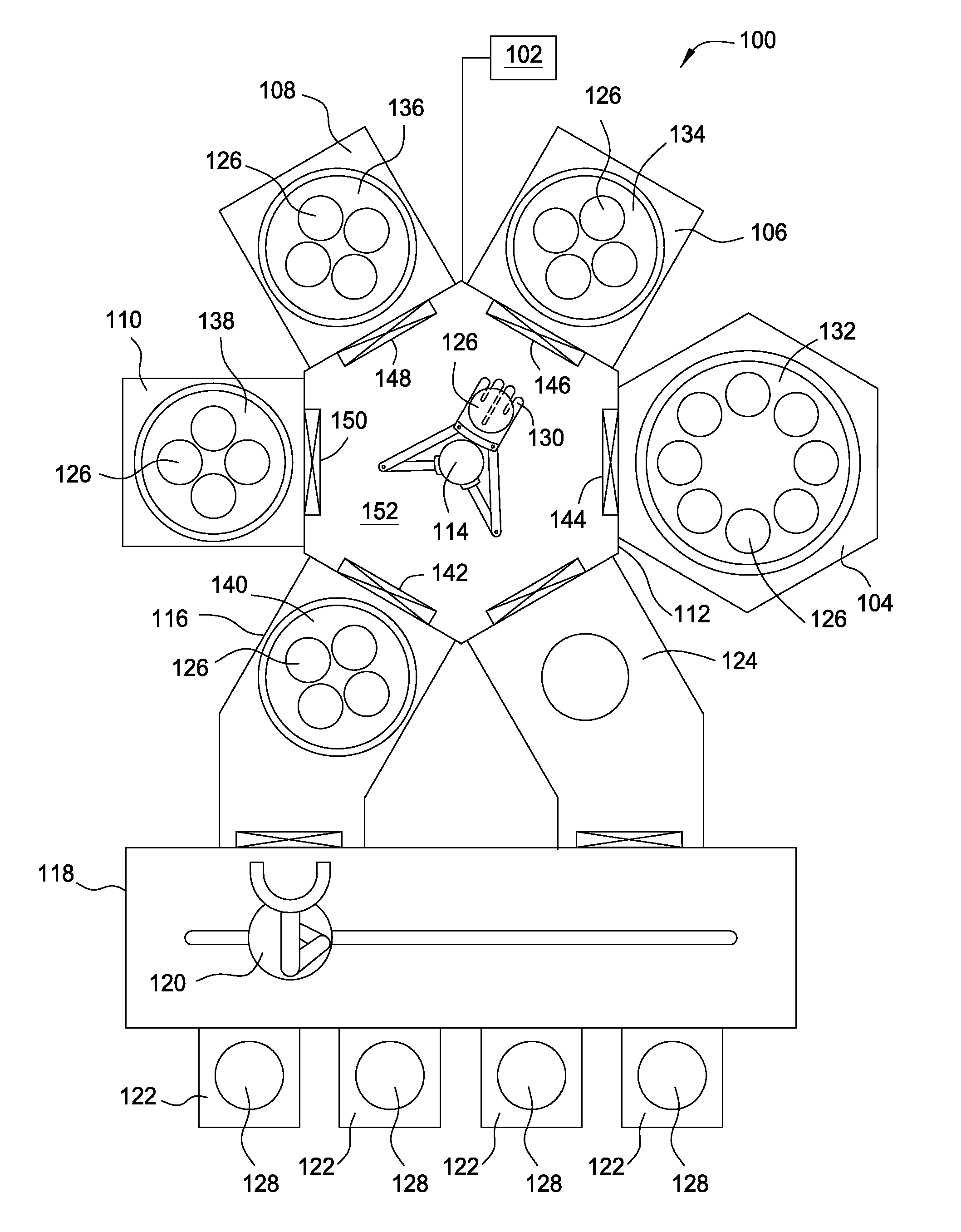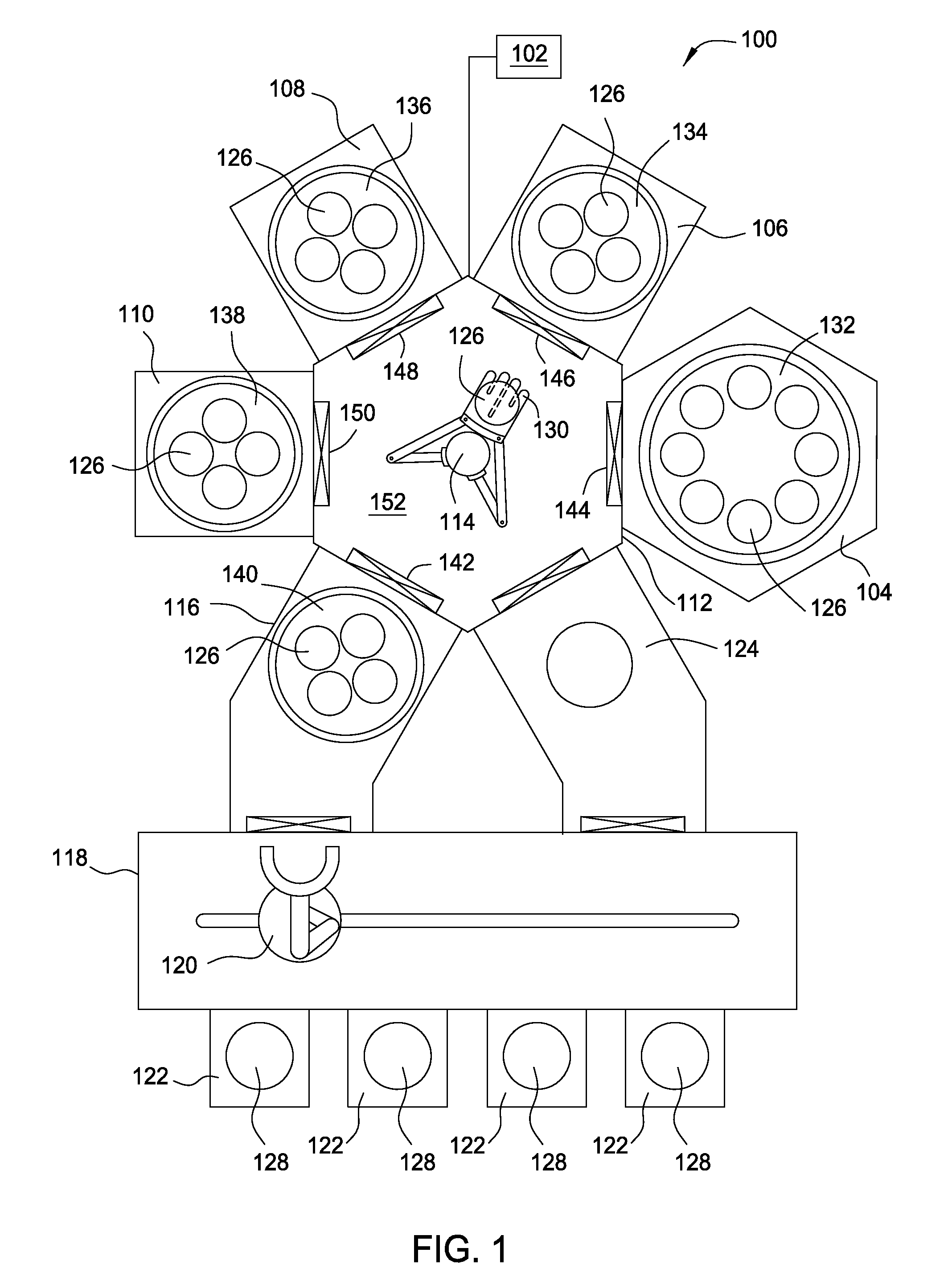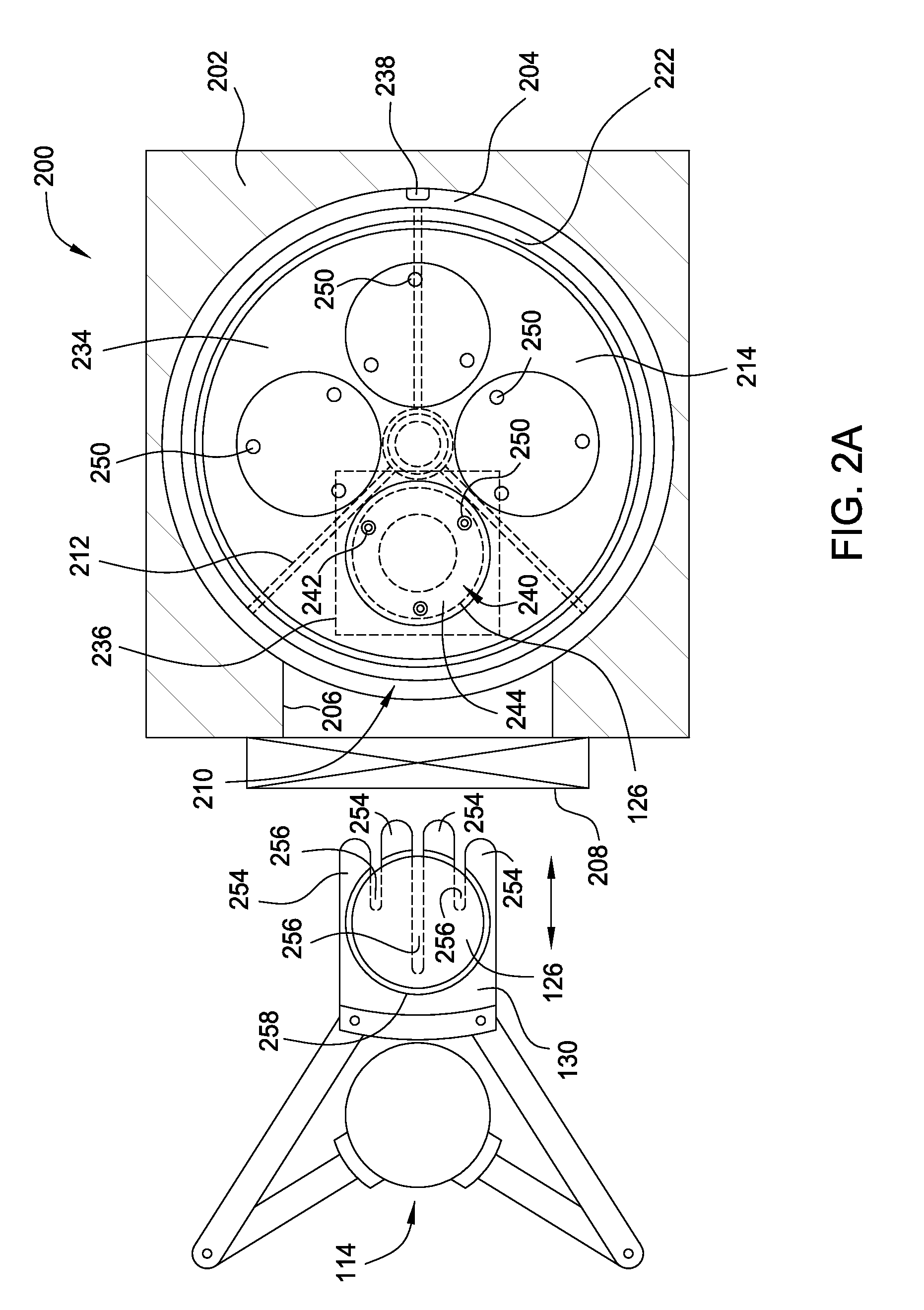Segmented substrate loading for multiple substrate processing
a technology of segmented substrates and processing chambers, applied in the direction of pile separation, transportation and packaging, coatings, etc., can solve the problems of affecting the repeatability of processing chambers, limiting the size of substrate carriers, and using substrate carriers limiting productivity in various ways
- Summary
- Abstract
- Description
- Claims
- Application Information
AI Technical Summary
Benefits of technology
Problems solved by technology
Method used
Image
Examples
Embodiment Construction
[0030]Embodiments of the present disclosure provide apparatus and methods for loading and unloading a processing chamber configured to process multiple substrates. More particularly, embodiments of the present disclosure provide apparatus and methods for loading and unloading a processing chamber in a segment by segment manner. Embodiments of the present disclosure also provide apparatus and methods for transferring multiple substrates in and out a processing chamber without transferring substrate supporting trays in and out the processing chamber.
[0031]FIG. 1 is a plan view of a cluster tool 100 for multiple-substrate processing in accordance with one embodiment of the present disclosure. The cluster tool 100 generally creates a processing environment where various processes can be performed to a substrate. In one embodiment, the cluster tool 100 is to fabricate compound nitride semiconductor devices, such as light emitting diodes (LEDs), laser diodes (LDs), and power electronics. ...
PUM
| Property | Measurement | Unit |
|---|---|---|
| diameter | aaaaa | aaaaa |
| diameter | aaaaa | aaaaa |
| diameter | aaaaa | aaaaa |
Abstract
Description
Claims
Application Information
 Login to View More
Login to View More - R&D
- Intellectual Property
- Life Sciences
- Materials
- Tech Scout
- Unparalleled Data Quality
- Higher Quality Content
- 60% Fewer Hallucinations
Browse by: Latest US Patents, China's latest patents, Technical Efficacy Thesaurus, Application Domain, Technology Topic, Popular Technical Reports.
© 2025 PatSnap. All rights reserved.Legal|Privacy policy|Modern Slavery Act Transparency Statement|Sitemap|About US| Contact US: help@patsnap.com



